Eurail Passes are famous as a way to save money while exploring Europe, but they are also confusing and often misunderstood. They are still an amazing money-saving tool for certain types of travelers, and not a wise idea for most others. Before Europe introduced dynamic rail pricing (like airfares, where the price varies depending on when you buy it), a Eurail Pass was an easy way to save money since all tickets had fixed prices that were generally fairly expensive. These days most travelers can save far more money just by buying their train tickets at least a few weeks in advance.
That said, Eurail Passes are still great for longer trips and especially for people who like to make plans as they go. Dynamic rail pricing made advanced tickets much cheaper, but it also made last-minute tickets MUCH more expensive. Below we will discuss Eurail Passes and whether they are a good idea for your trip or not.
Disclosure: This is a reader-supported website and some of the links are affiliate links where a small commission is paid to help keep this site going.
Note: This article was written in 2012 and has been continuously updated since then, so all information is current as of April, 2024.
Eurail 2024 changes: New countries and a mobile version
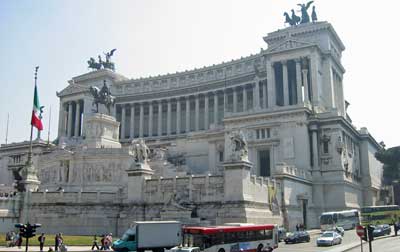
Aside from that it’s just the normal fact that they have updated the timetables as of December 2023 and have a few promotions going on, but those usually don’t happen over the busy summer season.
Eurail passes are now available in a mobile version
Until very recently, Eurail Passes were only available in paper form and they were quite confusing at first. You’d get a pass with a series of empty boxes on it and you’d need to enter your trip before you’d use your pass each day and then have the first conductor verify it. If you lost your ticket (and this was not uncommon), it was a whole ordeal to attempt to get a replacement.
Again in 2024 Eurail offers a fully mobile version that is delivered instantly to your mobile device with no delivery fee. And if you somehow lose your phone, you can resume using your Pass on your replacement with no extra headache. This is MUCH more convenient in every way and as long as you can keep track of your phone you’ll always have your train pass handy.
If your trip will be 2 weeks or less, a Eurail Pass probably won't be worth it
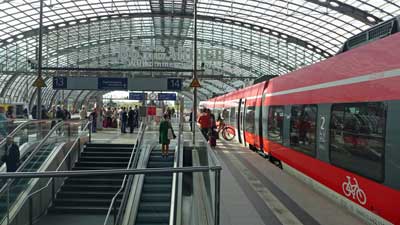
Eurail Passes are ideal for travelers on longer trips, and especially those who don’t want to plan all of their destinations and dates far in advance. If you have your itinerary pretty much planned out and you don’t require much flexibility, you’ll be far better off just locking in your dates and buying your train tickets as early as you can. Again, they can be surprisingly cheap if you buy 2 to 4 months out.
If you are age 27 or younger, a Eurail Pass is probably worth it

With this in mind, if you are lucky enough to still be 27 or younger, you should seriously think about getting a Eurail Global Pass Youth, partly because the sense of freedom instantly gets more expensive at age 28. The age cutoff was 25 until recently, so this change is a great deal for anyone who will be 26 or 27 at the start of their trip.
You aren’t guaranteed to save money by buying a Youth Eurail Pass, but chances are good that you WILL save money and you’ll definitely save a lot of hassle as well. Especially now that Eurail Passes come in a mobile form, it’s even that much more convenient to just hop aboard any train that is about to leave the station and not worry about buying or even having a ticket. Especially for young people, it can be really fun and exhilarating to literally just walk into a train station with your backpack and look at the departure board and then decide where to go at that moment.
If you are age 60 or over, a Eurail Pass could also be great value
Another fairly recent change is that anyone who is 60 years or older at the start of the use of a Eurail Pass now gets 10% off the normal adult fare. That new discount is going to make this a great value for many travelers who might have been on the fence about buying a full-price pass before.
>>>Check prices on Eurail Passes
If you are planning on traveling in 1st Class anyway, a Eurail Pass is probably worth it
Most 2nd Class trains provide similar comfort and legroom to Business Class airline seats, or at least close enough, so for most people it’s not worth the added expense for 1st Class. However, if you are rich or elderly or fear contact with strangers, a 1st Class Eurail Pass is probably worth it no matter what.
Not only do you get much more comfort and legroom in 1st Class, with only 3 seats across instead of 4, but there is another advantage to 1st Class on European trains. Since it’s mostly business travelers and wealthy people traveling in 1st Class, the carriages are almost always mostly empty except in the mornings and late afternoons between large cities. In 2nd Class the only available seats might be two seats in an 8-seat cabin with all the other seats taken up by a loud family or a group of rowdy friends. In 1st Class you are all but guaranteed a peaceful ride, and usually plenty of empty seats from which to choose.
A hidden Eurail Pass benefit: Making extra stops on travel days for free
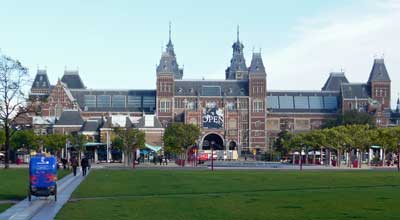
Brussels in particular is one I recommend a short stop in because the small historic center around what they called the Grand Place is amazing and gorgeous, while the rest of the city is rather boring by European standards. With a Eurail Pass you can jump off the train in Brussels and explore the city center for a few hours (luggage storage is cheap and easy) and maybe have lunch, and then hop on a later train to complete your journey to Amsterdam. There are opportunities like this on many if not most trips between larger cities, and if you buy the point-to-point tickets you have to stay on the train you booked.
Another example is the high-speed train between Barcelona and Madrid, which takes about 2.5 to 3 hours in each direction. There are some interesting cities in between, but in this case you could take a morning train from Barcelona to Madrid and then check into your accommodation, and then hop on another train from Madrid to Toledo, which takes about 30 minutes and costs €14 each way. Toledo is a historic and fascinating town, but it’s also pretty small and you can explore the main sights in an afternoon. With a Flexi Eurail Pass where you buy a certain number of travel days, you can save more money by adding on these sorts of nearby stops on travel days.
If you'll be touring major cities within ONE country, a single-country pass might be perfect, and Second Class passes are available for all ages
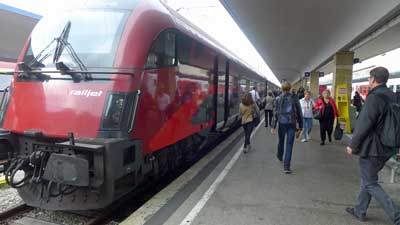
Single-country passes are still available and they MIGHT be good value for you, but it depends on which country and how much traveling you’ll be doing. If you plan on going all over a larger country such as Germany, France, or Spain, and especially if you like to make plans as you go, a Single-country pass for one of those might be your best deal. On the other hand, smaller countries (such as the Netherlands) or countries where train tickets are already fairly cheap (such as Italy) might be harder to get value out of. Long story short, for single-country passes you really need to check fares of the places you plan on going and see how they add up compared to the pass.
>>>Check prices for Single Country Passes
Eurostar (between London and Paris or Brussels or Amsterdam) tickets are now included for Eurail Pass holders for a €30 reservation fee
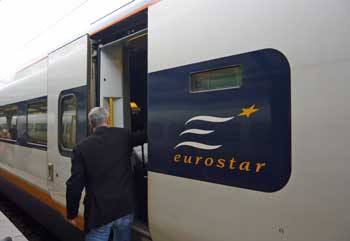
Our recent tests show that Eurostar fares one-way from London to Paris can be as low as €49 if you book about 3 months out, or as expensive as €214 for the same seat if you wait until the day of travel to buy. Round-trip/return tickets can be even cheaper if there is a promotion running.
>>>Check Eurostar prices
If you are on a really low budget, a Eurail Pass isn't a good idea
Here’s the thing. As we’ll discuss below, there are many potential benefits to Eurail Passes, and they will often save you money, but they do cost a lot and they only really save you money when traveling in the more expensive countries.
So let’s say you have a flight to Rome and then US$2,000 to last you a month after you arrive. Buying a Eurail Pass before you go would help you see a lot in that month, but you’d practically need to sleep in parks for your funds to last the whole time. You’d be better off moving slowly in the southern countries, or just in Italy itself, as a way to have the best holiday on your budget. You might also be tempted to use a Eurail Pass mostly on night trains so you can save the cost of a hotel or hostel, but those aren’t ideal for most of us.
The cheapest way to get around Europe by rail is to buy all train tickets online at least a couple months in advance. The fares are low, but they are non-refundable and non-changeable. See how far in advance you should buy train tickets to get those attractive fares.
If more than a little of your travel will be in eastern Europe, a Eurail Pass isn't a good idea
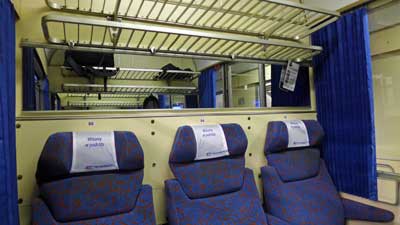
The good news is that the trains operating in this region, and the buses that operate alongside and/or where trains aren’t running, are quite cheap. So if any significant part of your trip will be into this region, a rail pass doesn’t make sense.
Basic types of Eurail Passes
Long gone are the days of the simple options, replaced by specialized passes that are meant to appeal to different styles. It should be pretty easy to figure out which is best for you, and then keep going down the page to decide if it’s worth it at all.
Eurail Global Pass – 4,5, or 7 days within 1 month or 10 days within 2 months
Until recently the minimum number of travel days with 10 days within 2 months, but now you can buy as few as 4 days within 1 month for about €200 to €250 (for first class). This can actually be an interesting strategy if you are planning many shorter and cheaper trips (like within Italy or Eastern Europe), and also 4 or 5 longer trips such as Berlin to Amsterdam. This way you can buy only 4 or 5 travel days and only use them for your most expensive travel days, and just pay as you go or buy cheap advance tickets for your other journeys.
Eurail Global Pass – 15 to 90 consecutive days
This variation allows for unlimited travel on the system for between 15 and 90 total days. They are really only a good idea for people who are certain they are going to travel very often, with much of it being in the north of Europe. The problem with them is that if you really try to get your money’s worth, you will probably ruin your trip by spending too much time on trains in general. On the other hand, if you will be in Europe for 2 or 3 months and plan on traveling around a lot, you can get a LOT of use out of a longer pass. The 3-month pass is around €900 so it’s literally about €10 per day. Imagine going back and forth between Berlin and Munich or Barcelona and Madrid for €10 per day!
One Country Pass
Obviously these are for travel within one country only. Again, they can be great deals if you plan on extensively moving around one particular country.
Where to buy your Eurail Pass
Eurail Passes are cheapest and easiest to buy online, primarily from two main sources which offer all the same products at the exact same prices:
This is a reliable company based in the Netherlands but with fulfillment offices in the US and Ireland. Price of Travel is a partner with this company, and if you use the links of this site we earn a small commission to help keep this site online. Eurail.com is usually cheaper than RailEurope (discussed below) by the way.
They were founded in the 1930s and are based in New York, but owned primarily by the French and Swiss rail companies. They offer free shipping (2 to 3 business days) on all orders of US$399 or more, although now that a mobile version is available, this is meaningless. Price of Travel is a partner with this company, and if you use the links of this site we earn a small commission to help keep this site online.
Reservations on European trains for rail pass holders
For most of the fastest trains between major cities you’ll need to reserve a seat even with a rail pass. It can usually be done just before you leave and the cost is usually around €5. Here’s a full list of which European trains require reservations and which don’t.
Reservations are required on all intercity (longer distance) trains in or involving France, Spain, Switzerland, and Italy. For most trains in Germany, Austria, Netherlands, Belgium, and most of eastern Europe, you can usually find trains that don’t require seat reservations. Often, if you don’t leave until after 9:30am or so, you can ride on any train with no seat reservation, but you have to research each leg to be sure.
How to determine which trains require seat reservations, and also get schedules
You can click on the link just above this section for a list of countries and their seat-reservation policies, but in some cases it’s actually a bit more complicated than that. For example, you can generally ride without a seat reservation on fast ICE (Inter City Express) trains in Germany if you depart after 09:30 in the morning. They do this to free up seats for business travelers who pay full fare, and they don’t mind filling up seats with rail pass holders on trains leaving a bit later.
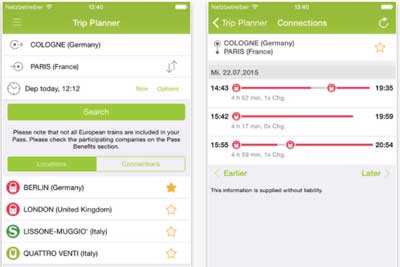
Night trains in Europe are making a comeback
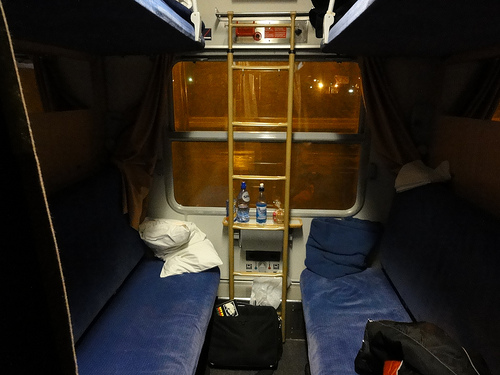
Fast forward to 2024 and night trains are not only expanding service, but they are very trendy. Some of it is nostalgia for the older way of getting around, but most of it is for environmental purposes combined with European hatred for the “low cost airline” experience with RyanAir and Easy Jet etc.
Personally I’m still not a fan of night trains because I find it difficult to sleep on them since they often get decoupled at interim stations in the middle of the night and then coupled onto other trains coming from other places, and I can’t sleep through any of that. But still, they are worth looking into and they are fun to try at least once.
A bit of warning that they tend not to be cheap and even if you have a Eurail Pass you’ll almost certainly want to book a sleeping cabin with a bunk or couchette, and that will come at an extra fee. On the other hand, if you are the sort of person who can sleep sitting upright in a normal seat, then that won’t cost any extra on most overnight trains.
Factors to consider when thinking about any Eurail Pass
Assuming you know which Eurail Saver Pass option is the best one for your type of trip by now, we’ll go over the main factors that should help you decide whether it’s the best idea for you.
Eurail Passes are best for standard ‘medium length’ journeys
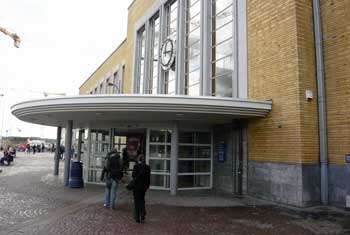
However, if you are determined to travel between Rome and Paris, it’s about a 14-hour journey that will almost certainly be overnight. In this case, a cheap plane ticket is probably better, although taking shorter hops on the train is even better, so spend a day or two in Milan or Lyon on the way instead.
And of course, if you prefer to stop in various small towns between the big ones, then a Eurail Pass won’t pay off, except for the traditional kind for unlimited travel in a given period.
Eurail Passes are better value in northern Europe, France, and Spain, and poor value in Italy
Once you do a bit of research you’ll quickly learn that train tickets (and almost everything else) are much more expensive in Germany, Netherlands, Denmark, Sweden, Norway, and Finland than they are in Greece, Italy, Portugal, and Spain. With this in mind, the regional passes can make sense if you are spending time in the south, but the Global Passes almost certainly won’t. Train tickets in Spain used to be fairly cheap, but in recent years they’ve added new high-speed trains between the major cities, and these are quite expensive.
Unlike most other countries, Italy really subsidizes its train tickets so they are quite reasonable even on travel day, and very cheap if you buy a month or more in advance. For example, you can go between Rome and Florence for around €49 if you buy on travel day, and as little as €19 if you buy well in advance. In most other countries, fares are double or triple that much for similar rides.
So consider your planned itinerary. If more than half of it is in the Mediterranean countries then look into a Regional Pass or just buy tickets as you go, because they tend to be pretty cheap. But if you are planning on spending at least half your time in Paris and places to the north of it, then a Eurail Pass is probably a money saver because those tickets are expensive.
Trains are almost always better than planes
Flying sucks, even in Europe
Until you’ve experienced the joy of traveling around Europe by train you might be tempted to “maximize” your time by flying low-cost airlines between each city. This would be a mistake. In order to get truly cheap airfares you have to purchase long in advance, buying non-refundable tickets. You might also have to commit to flights in the very early morning or in the late evening, because cheap tickets on convenient flights sell out quickly.
And again, most European airports are around an hour outside of the city. They are often on the main train lines, which helps, but still you have to deal with the madness of security and also try to get there at least two hours early. From one city center to any other city center it’s about 5 hours minimum, even if they are close, and those are pretty miserable hours.
Train travel is a positive experience

Not only are all the seats comfortable on trains, but you also have an interesting view most of the time. Better still, trains deposit you in the heart of every city, which is usually the neighborhood with the cheapest hotels and food. It’s a wonderful feeling to step off a relaxing train ride, buy a hot dog or sandwich at a local shop, and then be in your hotel room only about 10 minutes later.
Eurail Passes are better than train tickets alone
As someone who enjoys the process of crunching numbers and looking for value, I have to also mention that I’d buy a Eurail Pass even if it seemed like it would cost a bit more than the individual tickets. With a pass you get an extra element of freedom that is worth a lot more than you might expect until you’ve used one.
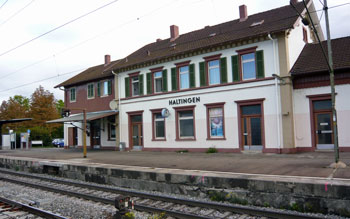
Let’s say you are heading from Amsterdam to Hamburg tomorrow morning. The 09:00 train you planned for might seem a bit ambitious after a long night out, so you can instead opt for the 10:00 or 11:00 train. As long as you walk into Centraal Station 10 or so minutes before departure, you are on. If you are flying you can’t change your ticket, and if you are buying train tickets as you go you have to be in line at the international desk at the train station at least 30 minutes early, and even then you might miss it if they are busy.
Freedom and getting to feel like a big shot
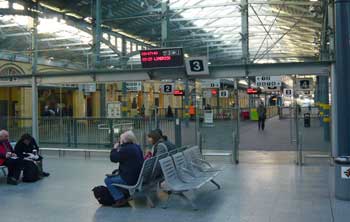
Let’s say you are staying at a hostel in Brussels, and two groups of new friends suggest that you go along with them to their next stops. One group is going to Bruges, which is a short and cheap journey, so you can join them by buying individual tickets (unless you have the unlimited pass, making it free). Then you restart your trip from Bruges, on to your next destination. The other group is headed to Berlin on a night train, which is long and expensive, but with a Eurail Pass you don’t even have to think about the cost. On you go, just like a rich person.
Buying a Eurail Pass is great for those who might run out of money
We all know people who keep meticulous track of every penny they spend, and who are always putting money away for a rainy day. And we all know people who can take a US$100 “entertainment fund” and burn through almost all of it in just a few hours. For the first type of person, a Eurail Pass can help you keep track of expenses, but it’s really the second type of person these are best for.
It’s sad to hear about people who have big plans to see their dream destinations, but they run out of money for transportation halfway into the trip, so they have to just stay put until they fly home. It happens. Locking in your major transportation costs before you leave home, and probably saving money in the process, is a wise move for anyone who isn’t as disciplined as they’d like with their money.
>>>Check prices on Eurail Passes
Bottom line: If you want to keep travel costs down, your choices will usually be a Eurail Pass or buying tickets at least a month or more early
In the last few years, almost every long-distance train ride in Europe has switched to a pricing system similar to low-cost airlines. In other words, tickets go on sale 2 to 6 months ahead of time at very low prices, and they keep getting more expensive as the train fills up and the date approaches. For most trips where a rail pass is possible, this is how things stack up:
Cheapest possible way: Buy advanced (non-refundable, non-changeable) train tickets at least 30 days in advance
Next cheapest way: Buy a Eurail Pass and make seat reservations as you go, usually only a day or less in advance.
Most expensive way: Buy train tickets as you go, or less than a week in advance.
Thinking about it this way should make the choice a bit easier. If you are the type who likes to plan each day and travel segment long before you even leave home, then buy tickets online for the best prices. This can be the best strategy for most shorter trips (10 days or less) because you simply don’t have enough time to change many things as you go anyway.
Buying a Eurail Pass won’t be quite as cheap, but you are buying a LOT of flexibility with the extra money. If you dream of making up your plans as you go, or even making up your plans just a few days in advance, this is almost always your best bet.
But if you wait too long, and just show up looking to buy train tickets as you go, they are going to cost a fortune. As recently as only a few years ago all seats would be the same price on many rail systems, so you could always just wing it. When each country computerized its rail systems so they can sell advanced tickets cheaper, they also had to keep track of seat reservations, so the whole pricing structure had changed to favor advanced ticket buyers and rail pass holders over those who’d prefer to just hop on any train as it is leaving the station.
Have a rail pass or itinerary question of your own?
It wasn’t planned but scores of people began asking me rail pass and itinerary questions at the bottom of this article and a few others. I’m happy to keep answering them and now I’m trying to organize them better as well so they are easier for other people to find.
If you have a question about specific types of European rail passes, please ask it in the comments below.
But if you have a question more about a European itinerary or other non-rail-pass questions, please click over to the European itineraries Q & A article and ask in the comments of that one.

I’m planning a 2.5 month trip to Europe; Norway, Denmark, and Germany. I was planning on getting the Select Pass: 3 Countries and 10 days within 2 months. And in the last half month, I’d only need to take one train back to the airport, so I’d just pay for that one. Now what my main question is, if I take the train 2 times in a day to go to two major cities for connecting trains to go from Norway to Denmark, does that take 2 of my 10 days away, or just 1 if I take the two separate trains in 24 hours? Thanks!
April,
These train passes work on days rather than journeys, but it’s based on a calendar day rather than “within 24 hours.” So in other words, if you used a travel day going from Amsterdam to Hamburg in the morning, and then spent a few hours in Hamburg before boarding again on a train for Copenhagen, it’s all just one travel day. Also, for night trains, if you board after 7pm then the “travel day” is the arrival day and you don’t use one for the departure day.
However, if you take an evening train and then the following morning you take another ride, it counts as two days even if it’s within 24 hours. Hopefully this answers your question. -Roger
I am a graduate student planning a tour of France begining and ending in Paris, with side trips to Versailles and nearby Chartres, and making short stops in Amien, Reims, Troyes, Cluny, Lyon, Le Puy, Avignon, Arles, Nimes, Albi, Toulouse, Narboone, Carcassone. I am 28 so the second class tickets are not available to me, and I don’t wish to spend all of my trip driving. Are any of the Eurail passes worth it for at least some of my trip, or should I just purchase as I go?
Heather,
This is a tricky one because France (as you probably know) doesn’t offer its own one-country rail pass. However, a France-Italy Pass is available, even in 2nd Class, and it’s useful for many France-only itineraries, though probably not for yours. It appears that you are only going about 150 kilometers with most of your legs, and those tickets individually go for around €30 and up, which would be cheaper than buying a rail pass. If you were going 300 kilometers or more on most legs, which is more typical of people only doing a few stops in France, a rail pass would be cheaper.
So my advice for you is to buy as you go, and buy them online as early as you are sure of your schedule. France is among the countries that now offer cheaper online tickets if you buy well in advance through their website http://en.voyages-sncf.com/en/ . The trick is that when the site asks for your home country, do NOT choose the US or Canada, or it will send you to its American site that charges more for individual tickets. Unfortunately, you usually have to buy tickets at least two weeks in advance to get the lower prices, so you don’t have the same freedom you get with a rail pass, and walk-up fares can be quite expensive. -Roger
Hi Roger! Your advice is amazing – I would love to hear more or read about your experiences more if you have a blog/another website. I am 20 years old and leaving next week for Europe and am backpacking for a month. I am seeing friends in London, then flying to Istanbul. Then going to Athens, and over to Rome-Venice. Then I have a day trip planned for Munich, and have a 9 day period open to wherever I end up (final stop in London but don’t need time there) Prague is a must and I would like to get to the Auschwitz Museum and up to Copenhagen (grandparents were from there). I will be taking train starting in Rome. Would a 15 day continuous pass be the right way to go? Thank you for any advice!
Kevin
Kevin,
Thank you for the kind words. I do have a personal blog, but I haven’t written anything new on it in a couple of years and I don’t really promote it. There are plenty of better ones out there.
So starting in Rome, how many total days would you have on the road before going to London? If it’s 15 or so, then that continuous pass could be a winner for you. For your Munich day trip, are you planning on stopping there for part of a day between two other cities? I did that to see Oktoberfest without spending a fortune on a hotel room, but when the festival is not on I’m not sure how much you’d see in an afternoon.
One complication with a continuous days pass is that there will be the temptation to use the hell out of it, as in 10 trips in 15 days to get the most “value.” But riding on trains almost every day is no way to really enjoy the actual destinations, so you need to strike a balance.
You could do something like this:
Rome (2 days)
Venice (1 day)
Salzburg and Munich (1 day)
Prague (2 days)
Krakow and Auschwitz (1 day)
Berlin (2 days/night train)
Copenhagen (2 days)
Amsterdam (2 days)
Bruges (1 day)
Paris (2 days)
All of those cities are among my favorites in Europe, and if you did a route like that you’d get great value out of a 15-day continuous rail pass, though skipping 1 or 2 of them might even be better. I’m not sure if this is the sort of advice you were after, but feel free to follow up either way. -Roger
Thanks Roger! I have 16 days total starting in Rome and ending in London. I will spend 3 days in London at the end after the 16 days. I have heard of a bike tour that is 4 hours long and does all of Munich that many friends have said is well worth it and will be a good day trip, I may stay there that night.
I will be going to Berlin, Amsterdam, and Paris later on in September on a Semester at Sea program, so I do not plan on those now so I can see more of the other locations. I haven’t heard much on Bruges – do you have any main suggestions?
I’m really glad that you think this will work out well and I would like to get to each of the other locations! Do I need to look ahead alot for night trains/best routes or like you said, going and getting on trains as I go can work as well?
Thanks – I just got the 15 day pass!
Kevin,
Ah yes, I’ve done those Mike’s Bikes tours in a few cities and they are fantastic. And they are perfect for Munich because it’s a bit spread out, which is why I mentioned that it’s hard to see much of it in a short time. So do the bike tour for sure.
Bruges might be the highlight of Belgium for most people and it’s a great stop for a day or two. If you have time, watch the recent (hilarious) movie “In Bruges” before you go.
If you are skipping Berlin and Amsterdam on this trip, you might consider adding in Rothenburg ob der Tauber, which is another medieval town near Nurnberg, and definitely worth one day and one night if you can pull it off. Budapest is a lot of fun so it’s another to consider with your transportation all being handled.
For most of these routes there are hourly trains during the day, and a night train leaving around 10pm or 11pm each night, but only for places that are 7 to 12 hours apart. If you just Google “(city) to (city) train schedule” you’ll see a list of the daily trains in the first few results. And with a pass, you can get on any of them, except that you’ll need a seat reservation on most of them. A seat reservation usually costs about €5 and you can usually get it just before the train leaves, though I prefer to get them the day before so I can get to the train station just before it pulls out.
So in other words, there aren’t night trains between every two cities, so it’s worth Googling them as you are making your plan. And if the cities are 6 or fewer hours apart, a day train is the better, if not the only solution. Let me know if you have any other questions. -Roger
Hello Roger
I am absolutely amazed at your knowledge!I have been reading through the string of enquiries and your comments – A wealth of very useful details that I will take note of. Thank you 🙂
If you have a moment, would you mind please assisting me with a dilemma I’m having with working out Eurail Passes / tickets required for our trip?
My partner and I (in our 30s) are departing Australia to Italy, France & Spain for a month in September 2013.
We don’t have a set itinerary but a rough plan and order of what we’d like to include, as follows:
Fly into Rome – stay 2 days
Tuscany – 3 days
Florence – 2 days
Cinque Terre – 1 day
Milan – 1 day
Nice – 2 days
Lyon – 2 days
Paris – 2 or 3 days
Bordeaux area – 2 days
San Sebastian – 2 days
Bilbao – 1 day
Figueres – 1 day
Barcelona – 3 days
We’d love to include Granada & Seville before flying out from Madrid, but not sure if we a trying to squeeze too much into the itinerary?
I was amazed a the cost of the Global Pass for 15 days and hoped to seek a cheaper alternative – Would the Global Pass for 10days then individual tickets for shorter trips for the best way to go for our trip?
Thank you for your time
Charmaine,
A Global Pass wouldn’t be good value for this itinerary at all. I’d say your best bet is a France-Italy Pass and then to pay as you go in Spain. The France-Italy Pass comes in either 1st or 2nd Class, with 15% off for the Saver option with two traveling together. You can get it for anywhere between 4 and 10 travel days, so if you keep your itinerary like this you’d go for 8 travel days. At the moment they have a special going where you can save €25 on an order of €600 or more with the promo code: 74ESS13.
You aren’t really covering much ground in Spain, so the individual train rides won’t add up to much, and even if you do find them expensive you can always take buses, which are cheaper and almost as comfortable.
But…I do think you are already trying to do too much, before even adding Granada and Seville. In a month I think 12 total cities is about the maximum I’d recommend before you start making yourself crazy. Even though many of your travel legs are only about 3 hours each, by the time you’ve checked out of one hotel, made it early to the train station, and checked into your next hotel, about 6 prime sightseeing hours are gone. So for the most part, a travel day equals half a sightseeing day, or even less. If you travel every second day, you’ll be spending close to half your holiday on trains and in train stations.
So getting specific, I’d stay at least 3 nights in Rome. Florence, as you hopefully know, is in Tuscany, so I’m assuming you plan on visiting one or two of the smaller hill towns in addition to Florence? That seems fine. You might just want to skip Milan rather than spending 1 night there.
Why Lyon? Unless you have something specific you want to see there, I’d skip it and add those days to Paris, which deserves at least 3 nights if not 4 or 5.
Granada and Seville are quite nice, and probably better than those 1-night stops you’ve got planned for Spain. Again, on a 1-night stay, the most you’ll be able to do is see one thing in the afternoon, have dinner, and wake up the next morning to pack and move again.
With all of that in mind, do what you feel passionate about, and even if you are rushing around it will be fun and full of great memories. Once you’ve got it locked in, count those trips in Italy and France and buy that France-Italy Pass mentioned above. -Roger
Thank you so much for your advice Roger!
I will look at that France-Italy Pass – sounds perfect!
I greatly appreciate your comments and help with sorting the itinerary to be more manageable…..
With Lyon, i’d read some impressive stories about it being an amazing food capital so had really hoped to include it –
I’m still wondering if Bordeaux is worth the visit or if we leave it out of the trip?
We’re thinking some of the big distances in Spain may be better to travel via plane – what are your thoughts? Is there an airline better than another in Spain?
Thanks again Roger 🙂
Charmaine,
Well then Lyon sounds just fine then. The reason I asked is that many of us (including me) are sometimes guilty of planning stops in large and/or famous cities just because we’ve heard of them. Lyon isn’t considered one of France’s top tourist cities even though it’s large, but I’m sure the food is good and interesting. I haven’t been to Bordeaux since I was a child so I don’t have any advice on that other than to say it sounds justifiably popular, especially among the wine crowd.
Spain is an interesting place for longer distances. In the past few years they’ve added high-speed AVE trains between most of the larger cities, but those trains are very expensive unless you have a rail pass. So unfortunately, flying does tend to be cheaper, even though it actually takes longer in most cases (including all the time at the airports and such). So if you are thinking of doing at least 4 or 5 longer journeys within Spain, especially on the AVEs, it makes sense to get a separate Spain rail pass, or even switch to a France-Spain pass and pay individually for Italy because those aren’t as expensive. The seat reservations are an extra €10 in 2nd class, but it’s still way cheaper that buying train tickets as you go.
As for airlines, Vueling and Easyjet are the main ones, are both are fine choices. Easyjet is a big step up from Ryanair, in case you’ve heard the horror stories, but it’s still better to pack light if taking any of these low-cost airlines. -Roger
Hi Roger
Just wondering if you could offer some advice on using RailEurope…. I purchased my tickets/passes online through the website link you provided me with. I made payment over a week ago but keep receving automated emails from the company stating they do not have payment. It seems i can only contact the company online but they won’t reply to my emails. I am stressing they have taken off with my $1400…. Do you know of any way I can conatct these people?
Thanks so much,
Charmaine,
That sounds very strange and I’m confident that you’ll get it sorted out soon. Rail Europe is owned by the France and Swiss rail companies and they’ve been in business for something like 80 years. I’ve used them myself a few times with no problem, so you shouldn’t have to worry about them being a fake company.
There are toll-free phone numbers to call on this page: http://www.raileurope.com/about-us/contact-us2.html
-Roger
Next year, we are planning a trip using the Eurail FlexiPass (10 stops in 1 month). Where we are having some questions is in Italy. We were planning on going from Venice to Cinque Terre to Florence and on to Rome. What is the best option to get from Venice to Cinque Terre and then to Florence? Does the Eurail pass cover getting to Cinque Terre? We wouldn’t mind stopping in Bologna for a little bit if that was an option for switching trains.
Colleen,
The Cinque Terre is along a rail line between Genoa in the north and La Spezia in the south. From Venice, you can either change trains in Milan on your way to Genoa, or change trains in Florence and Pisa on your way to La Spezia. Each option takes about 4 hours total, so it’s a toss-up. Bologna is between Venice and Florence, so you could stop there on the way if you took that route, but it’s slightly easier and perhaps better to head to Genoa first. That way you’ll take the Cinque Terre train just once, going south, and then you can head to Florence from La Spezia in the south.
And yes, the Eurail passes do indeed cover all the trains in Italy, including the line between La Spezia and Genoa. -Roger
Thank you for your help! Also, if we planned on taking a night train from Munich to Venice, with the Eurail pass, do we just book a reservation for a couchette or sleeper? And do we do this before leaving for our trip? I saw prices for around 37 euros for a couchette, does this seem correct for the additional costs of that train ride?
Colleen,
Yes, €37 sounds about right for a 4-berth couchette, or €27 for a 6-berth couchette, I believe. You can sit in a normal seat all night for about €11 for the seat reservation. Those are the prices for a reservation for a Eurail Pass holder. Without a pass the prices are obviously much higher.
The best and most typical way of making that reservation is to do it once you arrive in Munich at the train station in the normal ticket lines. Even if you wait until 30 minutes before the train leaves, you’ll almost certainly get a couchette, but I prefer to do it the day before for less stress. You might also be able to make the couchette reservation through the same website where you bought the Eurail Pass. -Roger
Hi Roger,
I’m so glad to find this site. My family of 3, with our 11-yr old son will be traveling to Europe this in two weeks but we have yet decided on this…
Should we get a global family pass?
Entry in Munich(1 day) > Fussen (1 day) > Winterthur (2 days) > Barcelona (a must-3-day visit) > Italy (Rome,Pisa,Venice – 3 days) > Austria (Villach & Salzburg – 4 days family reunion) > Berlin (2 days) > Amsterdam (2 days) > Brussels (1 day) > France (3 days with Disneyland)
The trip from Zurich to Barcelona and the Barcelona to Rome are both plane rides. All the rest are thru trains.
If you will recommend for us to buy a pass, will it be safe to have it delivered in our first hotel in Munich so we could use it at once?
Thank you for your assistance.
Scarlett,
I’m glad you found this site as well. This looks like a pretty busy and fast-moving trip, but doing those 2 flights in there definitely makes it reasonable.
I do think the Global Pass for 2 adults and 1 child traveling together makes the most sense, and it should give you good savings because many of these legs would be quite expensive on their own. You might be okay with the 10 days out of 60 option, but the 21 consecutive days option is only a bit more expensive and it would give you complete freedom to use it for side trips and day trips so I would probably go with that.
If you buy through the link above, you’ll get free shipping (on all orders over US$399) and it only takes 2 to 3 business days, or you can pay a bit more for overnight shipping, assuming you are in the US or Canada. They also do ship to hotels in Europe, and chances are it would be fine, but I really think you’d be best off ordering it soon and having it shipped to your home. -Roger
Thank you very much for the immediate response 🙂 We are coming from Dubai. I hope they still have enough time to deliver. All the best to you!
Scarlett,
It’s a pleasure to help, and I believe they ship tickets to your area from France, so I’d think it would still take a week or even less. Bon voyage. -Roger
Hi
We are planning a 15 day trip to Europe. Our itinerary:
Switzerland (Montreux,Gstaad,Zermatt) 4 days
Innsbruck 2 days
Salzburg 4 days (1 day trip to Munich for Oktoberfest)
Prague 3 days
Vienna 3 days
Could you please help us with the best route to cover these destinations along with pass options.
We were considering the 15 day global pass. But not sure if that is the most cost effective option.
We were thinking of taking the overnight trains to goto Prague from Salzburg and come back to Vienna.
Our tickets are booked entering Zurich and exit from Vienna from 21st Sep to 6th Oct 2013.
Also wanted to know if the travel options within each city like the buses/trams are also included in any pass. And are there any offers on some popular tourist attractions with some pass.
Would be great to get your comment on our itinerary.
Thanks in advance.
Anushree
Anushree,
I love this itinerary. You’ve chosen a really nice mix of scenic routes and cities, and a very good pace to go at. There’s only one efficient way of doing this without excessive backtracking, and that is the following:
Zurich > Gstaad > Montreax > Zermatt > Innsbruck > Salzburg (with the Munich side trip) > Prague > Vienna
With at least two people, your best bet is definitely the Global Pass for 15 consecutive days with the Saver option of 2 to 5 people traveling on the same pass. You’ll get great value out of it with those normally-expensive journeys within Switzerland and Austria, plus the Oktoberfest day trip (which I did using a rail pass as well, great idea).
I don’t believe there are night trains between Salzburg and Prague, probably because it’s only about 6.5 hours from one to the other. Most of the scenery is quite nice so it’s a good daytime journey anyway.
Local buses and trams are NOT included with a rail pass, although suburban trains (like Germany’s S-Bahn) are included.
There are indeed various offers that are included with the rail pass, though most of them are transportation-related, like 50% off a boat tour or ferry crossing and such, rather than museums and the like. There will be a list of all the discounts and offers included with the pass in the mail.
Another nice benefit of getting the consecutive-days Global Pass is that you can add in more day-trips or extra legs for free. For example, you could add in a visit to Neuschwanstein Castle between Innsbruck and Salzburg, and/or Rothenburg ob der Tauber, both of which are really lovely places. Salzburg is quite compact so 4 days there is a long time, even with the day trip to Munich. Overall I think it looks great and feel free to ask if you have any more questions. -Roger
Thanks a lot Roger for your advise. I think we will go for the 15day Global pass.
In continuation to my earlier post..
Also wanted to check with you about the night trains (Vienna-Prague-Vienna) and their reservation.
Do we need to pre book it or can we take it once we reach Switzerland at Zurich station.
Also, are the individual city cards a good option to see Salzburg, Innsbruck, Vienna and Prague?
Would really appreciate your comment on this too.
Also.. for the global pass. Can we purchase it at Zurich airport directly?
Thanks
Anushree
Anushree,
The trip between Prague and Vienna is a bit under 5 hours, so it’s actually shorter than Salzburg to Prague, but they are major cities so there is a night train. The problem is that the night train leaves a bit after 10pm and arrives a bit after 4am (night trains are slower because they change carriages with other trains along the way), so you wouldn’t get much sleep and you’d still probably need a hotel room unless you don’t mind wandering around with your pack from 4am until noon or 2pm.
If you do want to do those night trains, you can just book them once you arrive in the departure city. I normally book them the day before I’m going to leave, and there always seem to be bunks available, even in high season. If using a rail pass, you still have to pay about €20 for a couchette reservation or about €10 for a normal seat on night trains.
I do think those city cards, like for Salzburg and Prague, are good deals as long as you are the sort of traveler who likes to hit 3 attractions per day. And since they come with free use of public transport, it reduces the stress of figuring out the local ticketing system and trying to buy in a foreign language. So I’m in favor of them and have used many of them, but I also think it’s wise to look at what’s included in each one and make sure those are actually the things you want to see. A few of them leave out famous attractions (like the Anne Frank House on the iAmsterdam Card), so you can’t just assume that they include everything.
You can’t buy a Eurail Pass in Europe at all, although you could buy one online and have it shipped to a hotel in Europe. But it’s better to buy online and have it shipped to your home. They have fast delivery at a good price to most corners of the world. And right now the international site has discounts going, with €25 off any order of €600 or more using promo code: 74ESS13, or €80 off any order of €1200 using promo code: 75ESS13. -Roger
Hi Roger,
There are 7 of us planning to travel in May 2014 and the proposed itinerary would be:
We will be flying from Malaysia to Rome and we plan to take a train from Rome and the trip which will end in London:
– Italy: Rome 3 nights & Milan 1 night
– Switzerland: Lucerne 1 night
– Amsterdam 2 nights
– France: Paris 3 nights
– UK: London 3 nights
Would appreciate it very much for your kind advice and suggestion whether it is worth it to get the Eurail Pass etc. Thank you
Nelly,
Ah Malaysia, I’ve spent nearly two months there earlier this year.
Your trip doesn’t really lend itself to a rail pass. For one thing, that last leg from Paris to London will be on the Eurostar, which is its own system so you have to buy a separate ticket. Excluding that, you’ve only got 4 journeys here, and since at least one is in France, there aren’t any rail passes that would fit.
But the good news is that the only expensive trip you’ve got planned is Lucerne to Amsterdam, while the first two are fairly cheap. If you can buy ticket online in advance for the stops starting at Lucerne, you can get them at decent prices if you go to the national rail sites themselves.
And not that you asked, but Milan for 1 night is interesting, but not as interesting as Venice or even Florence for one night. Let me know if you have any other questions, and bon voyage. -Roger
Roger,
I’m looking for advice on my trip 90 day trip starting this week to Europe. Currently I have my flight into Amsterdam and place to stay there for two weeks booked and flight home in October. The rest I’m trying to make up as I go. The big picture I’m thinking is …
Starting in Amsterdam to Berlin to Prague to Frankfurt to Brussels to Paris Madrid with day trip to Morocco to Barcelona to Monaco to Rome (9/12 to meet family member there at airport) to Naples to Rome then fly to Frankfurt (family member leaves back to states). Train to Munich (Oktoberfest). Then get to Paris to meet my girlfriend where we want to go back to Italy (she’s never been and it’s her first time there) and last we fly out of Zurich via Paris back to states.
I’m traveling mainly by myself. I plan on staying at AirBnB sites, hostels, or hotel when needed.
I’d love to hear your recommendation on Eurail pass (really lost here on best option). I thought of getting a two month travel pass for me. Getting a separate train pass for family member from Rome to Naples back to Rome. And get some type of two country for my girlfriend and I starting for the last two weeks of the trip (Oct 4-17) between Paris and Italy and then to Zurich or maybe back to Paris if we can modify our flight plans?
Love to try and get to Greece if possible or Ireland (family there). Any and all suggestions welcome.
Thanks, Dj
DJ,
Wow, this sounds ambitious, but also reasonable and well researched. You’ve got many expensive journeys in that first part of your trip, so I’d recommend a Global Pass with 10 travel days out of 60. That way, you can use it on your longer or more expensive legs, and pay as you go for any shorter hops.
There’s no need to get a pass for Rome to Naples and back, because it’s a short and cheap ride.
For that last part, a France-Italy regional pass with the Saver option for two people traveling together might be a good idea. If you are just heading from Paris into Italy with no other France stops, the Italy country pass might be better, but if you want to stop in Marsailles or Nice or elsewhere then the France-Italy one would likely be the best value.
And by the way, Frankfurt has a great airport but not much else for most travelers, and there are several others Belgian cities more interesting than Brussels as well. If you have specific reasons to visit those cities then great, but if not, you might consider some alternatives. -Roger
Hi Roger,
Myself (age 25 when traveling) and two friends (age 26) are planning approximately a month long Europe trip in May 2014. We are planning on flying in to Barcelona making our way North to Paris, then Amsterdam, then Munich, Vienna, Venice, Florence, Cinque Terre, and finally flying out of Rome. We plan on staying at each place from 1 night to 3-4 nights in the larger areas. With this itinerary we are having a hard time deciding what our best/cheapest option is for travel. We like the flexibility of the Global pass but with the reservation fees (for possible night trains) and such we don’t know if it’s best to buy point-to-point tickets in some locations (like Barcelona to Paris) and then a different pass for the rest of the trip. Any help would be much appreciated with train passes or itinerary help! Thanks!
Alyson,
Yours would be a classic itinerary for a Global Pass, except that you only seem to have about 7 or 8 stops in mind. As you’ve certainly discovered, the 30 consecutive days version is quite expensive, and the Flexi version starts at 10 journeys.
So your actual best choice would be the Select Pass for Netherlands, Germany, Austria, and Italy, for 6 journeys. Unfortunately, you’d have to pay individually for Barcelona > Paris > Amsterdam, and those two journeys are expensive. Amsterdam to Munich and to Vienna to Venice are also quite expensive, so the pass would almost certainly save you money, even though those last few legs within Italy aren’t as expensive.
The seat reservation fees on this trip shouldn’t add up to much, mostly €5 each or so. But if you do night trains a pass is still a good deal because even though there is a €20 reservation fee for a couchette (bunk), that same bunk might cost €80 or more without the pass.
Interestingly, if you were to add more journeys to get it up to 10, you could use the Global Pass on all of them, and it might end up about the same price as the other option, or close to it. Like, you might add Berlin and Prague in there, which are both fantastic cities, and get the best value. Personally, I’d prefer either of those over Vienna, but to each his or her own. I’m happy to help more if you are still unsure. -Roger
So if we were to add Prague and Berlin which pass would work best? And is that including or excluding the Paris trains? Thank you so much for your help!!
Alyson,
The idea of adding those cities would be to get it up to 10 total. If you are interested in doing that, then then the Global Flexi Pass with 10 travel days out of 60 would be ideal. And with 3 traveling together, you can get the Saver version, which makes traveling in First Class quite affordable. -Roger